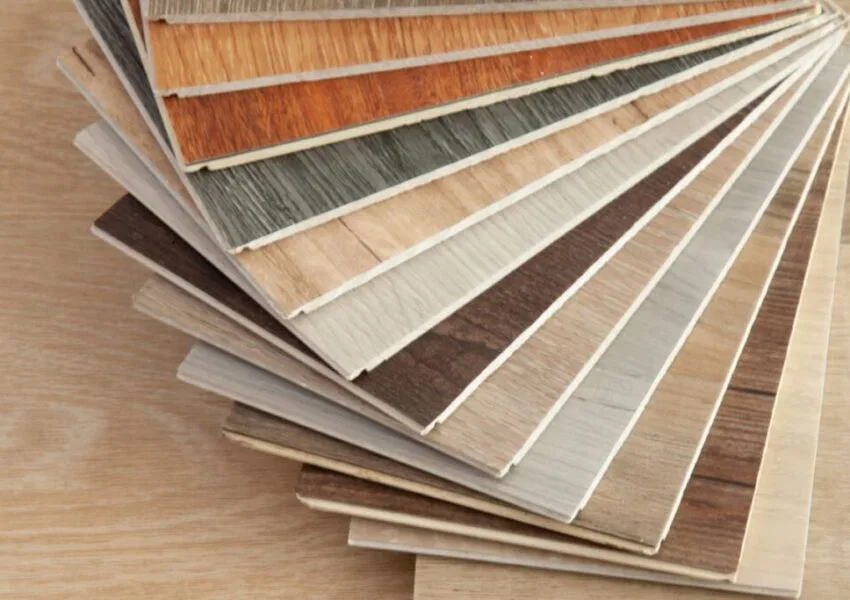How to Choose the Best Wood Floor Texture For Your Home

Published July 3, 2024
Whether renovating or building your next abode, picking the right floor for your home is paramount.
The dilemma is even more complex for homeowners who go for wood floors. Aside from choosing which type of wood and the color stain, they also have to worry about the texture.
While many prefer shiny floors, textured finishes have become popular. And it’s not just because they look more authentic. Textured floors are very tactile, too, which adds to the “rawness” of the wood.
If you’re considering getting a textured floor, here’s a quick guide on choosing the best wood floor texture for your home.
Does Wood Floor Texture Matter?
If your floor is one of the main focal points in your home, then yes, wood texture matters.
Texture gives life to your floor by lending it a distinct character and personality. This is especially important if much of your floor area will be exposed. Or if you’ll spend much time on your floor, like in your living room or bedroom.
Besides, if you often walk barefoot around your home, the feel of the floor on your feet will affect your experience. Not to mention that your children and pets will run around in it, too. This is why choosing the right wood floor texture for your home isn’t something you should take lightly.
Common Types of Wood Flooring Textures
To give you an idea of your options, here are some of the most common types of wood floor textures:
1. Distressed
You’ll love the distressed finish if you’re looking for an authentic vintage look. It’s created by working a hammer or chisel into the floorboards to create subtle cracks and lines without altering their structure. This produces a worn-out look like the ones you’ll see in old homes.
2. Smooth
This is one of the most common hardwood floor textures in most homes. A smooth wooden floor is achieved by sanding the boards until they are evenly thick and the surface as flat as possible.
A smooth sanded texture is ideal if you want a sleek floor that’s easier to clean and buff. Also, the softer your floor is, the less dirt and grime will get trapped.
3. Brushed
Farmhouses and rustic abodes often have brushed wooden floors. You’ll notice them by the distinct lines running along the length of the board.
These lines are created by combing the board with a hard-bristled wire brush. This process leaves indentations on the wood’s surface. In time, these scratches will develop a much darker color than the rest of the wood, creating a natural distressed texture.
4. Beveled
A beveled floor texture is ideal for hiding the sharp edges of a floorboard. No wonder why it’s one of the most popular wood floor textures for modern homes and living spaces designed for families.
As its name suggests, a beveled floor is made by shaving the sides of each plank to create a sloping edge. These edges form an angle when the planks are put together, creating the beveled look.
5. Reclaimed
Reclaimed floorboards are made from wood or planks salvaged from old barns, homes, and other wooden structures. As such, they have that distinct, weathered look that can be hard to replicate.
Apart from their natural patina, reclaimed woods tend to have nail holes and similar marks. This makes them perfect if you’re looking for a vintage floor with a rich history.
6. Hand Scraped
Hand scraping is one of the most traditional ways to create a distressed wood texture. The process uses hand scrapers, knives, and chisels to create distinct groves and streaks on the wood, giving it a distressed look.
Since hand-scraped floors already have grooves, hiding scratches and dents is easier. This makes it ideal if you have pets since you won’t have to worry about maintaining your floor.
7. Wire-brushed
Wire-brushed wood flooring has a unique texture that adds depth and character to the surface while retaining a smooth overall feel, making it a popular choice for those seeking a blend of texture and comfort.
On the other hand, whitewashed wood flooring involves applying a white stain to the wood, creating a bright and airy look that can help make a space feel more open and refreshed. These textures offer distinct aesthetic qualities that enhance a room’s visual appeal and ambiance, giving homeowners versatile options to customize their living spaces with stylish and contemporary flooring.

What To Consider When Choosing The Best Texture for Wooden Floors
Durability
When choosing a texture for wooden floors, consider durability, especially in busy spots like hallways or living rooms. Pick textures that can handle lots of use without getting easily damaged. This way, your floors can stay looking good even with all the activity they see every day.
Maintenance
Opting for a smooth finish when selecting a texture for wooden floors makes cleaning and upkeep simpler in the long run. Smooth textures require less effort to keep them tidy than rougher textures.
With a smooth finish, dirt and spills can be wiped away easily without getting trapped in crevices, saving you time and hassle when maintaining the cleanliness of your floors.
Aesthetics
When deciding on a texture for wooden floors, consider aesthetics – how it looks and feels in your space. Select textures that match your decorating style and help set the right mood in the room.
The texture of your floors can significantly influence your home’s overall atmosphere and vibe, so choosing one that complements your decor can enhance the visual appeal and create the ambiance you desire.
Comfort
When picking a texture for wooden floors, think about comfort – how it feels to walk on, particularly in areas where you spend a lot of time, like living spaces. Choose textures that offer a cozy and pleasant sensation under your feet, enhancing the comfort level of your home.
A comfortable texture can significantly affect how inviting and relaxing a room feels, ensuring that your living spaces are warm and welcoming for you and your guests.
Safety
Safety is crucial when it comes to choosing a texture for wooden floors. Look for textures that provide good traction to reduce the risk of slipping and falling, creating a secure environment for everyone in your home or space.
Textures with good grip help prevent accidents, especially in areas prone to moisture or where foot traffic is high, ensuring that your floors look good and prioritize the safety of those who walk on them.
Also Read: Glued Down vs. Floating Wood Floor: Which is Better?
The Best Texture For Your Wooden Floor
Apart from the wood floor textures mentioned above, there are a lot more variations you can choose from. It all boils down to your personal preference and the overall look you’re going for.
If your home design is rustic or vintage, distressed, brushed, hand-scraped, and reclaimed woods will make an excellent choice. But smooth and beveled floors are ideal if you want to build a modern home.
Again, whichever texture you choose, think it through, as you’ll have to live with it for years.
Hire The Timber Experts For Your Next Project
Vintage & Specialty Wood should be your source of the highest quality timbers from around the world. When it comes to fabricating and installing reclaimed wood or specialty wood products in your home, we don’t cut corners. We offer many reclaimed wood and specialty wood products such as Douglas Fir, white oak, and much more. We also offer timber framing and wood flooring services as well. Contact our team today to speak to a timber expert about what Vintage & Specialty Wood can do for you.

This Blog Is Fact Checked
This content has undergone meticulous fact-checking by our team of internal experts. Gain a deeper understanding of the high editorial standards we uphold on our website here.

About The Author
Experience, exploration, and knowledge are the hallmarks of writer Rei Bayucca. Her dedication to crafting articles that both inspire and educate will leave you thinking long after you’ve finished reading.




